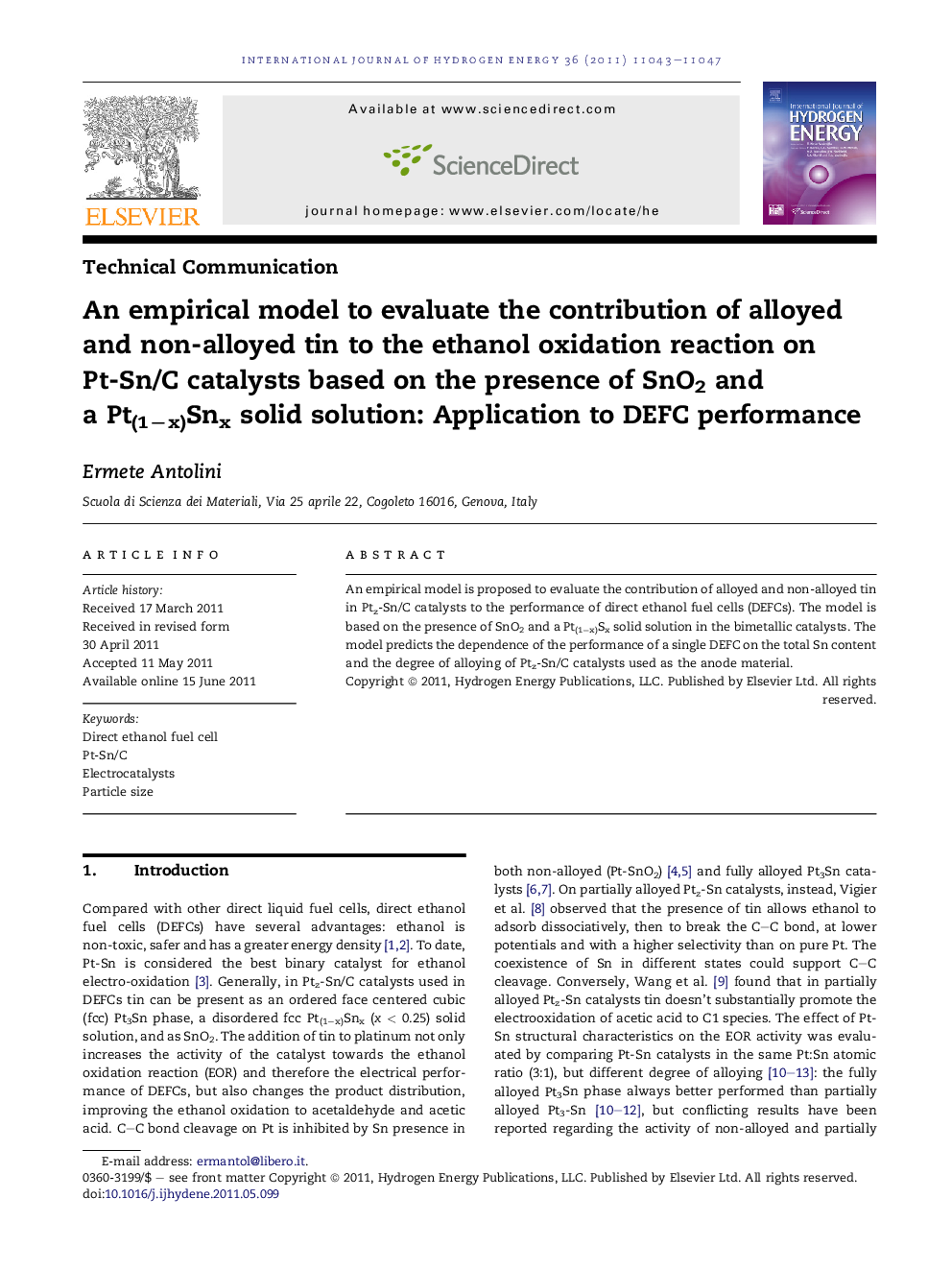| Article ID | Journal | Published Year | Pages | File Type |
|---|---|---|---|---|
| 1277575 | International Journal of Hydrogen Energy | 2011 | 5 Pages |
An empirical model is proposed to evaluate the contribution of alloyed and non-alloyed tin in Ptz-Sn/C catalysts to the performance of direct ethanol fuel cells (DEFCs). The model is based on the presence of SnO2 and a Pt(1−x)Sx solid solution in the bimetallic catalysts. The model predicts the dependence of the performance of a single DEFC on the total Sn content and the degree of alloying of Ptz-Sn/C catalysts used as the anode material.
►A model to predict the performance of DEFCs, which accounts for the characteristics of partially alloyed Ptz-Sn/C catalysts is presented. ► The dependence of MPDPtz-Sn/C on Sn alloyed goes through a maximum at xm = 0.135. ► The dependence of MPDPtz-Sn/C on Sn/Pt composition goes through a maximum, and z at the maximum of MPDPtz-Sn/C almost linearly decreases with x. ► The highest cell performance is obtained for an overall Sn/Pt atomic fraction of 0.758, of which 20% Sn alloyed with Pt and 80% Sn in an oxidized form.
